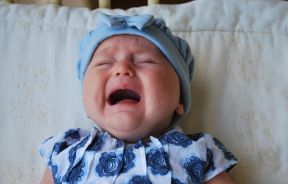Breast Density May Predict Cancer Risk In Younger Women: Can A New Density Test Prevent Onset Of Breast Cancer?

Younger women with dense breasts face a relatively higher risk of developing breast cancer in their lifetime, according to recent research.
Susan G. Komen says a woman’s breast density refers not to size but the amount of fat and tissue in the breast. Typically, younger women rather than older, will report to having denser breasts. After menopause, the amount of breast tissue begins to decrease and is then replaced by fat which leaves the breasts to become less dense. However, some older women who use postmenopausal hormones, such as estrogen and progestin, may display higher breast density until they stop using the hormones.
Breasts that contain more tissue than fat can interfere with breast cancer screenings. Breast cancer tumors are picked up by mammograms because of their white or light gray appearance, but these characteristics are also displayed by dense breast tissue, according Harvard Health Publications. Unlike the glandular tissue found in denser breasts, fatty tissue appears darker and provides a contrast to the tumors in mammograms. Digital mammography continues to be the best alternative for dense breasts because doctors can lighten, darken, or enlarge the images, which would help display tumors that otherwise would be hidden with film mammography.
Presented at the Radiological Society of North America (RSNA) conference, a team of researchers sought to clarify the relationship between breast density and cancer risks by comparing digital mammograms of women with breast cancer to mammograms of healthy women. Two hundred eighty-two breast cancer patients and 317 women without the disease who both underwent a mammography and automated breast-density test were part of the sample size of the study.
Typically, breast density is determined by its mammographic appearance and the radiologist's visual estimation, which leaves it to be both subjective and qualitative. The researchers at the RSNA conference developed a new method for measuring breast density to provide a more effective means for an accurate diagnosis.
The automated system used an algorithm, or updated formula, that was automatically and easily applied to a digital mammogram, which would allow for a more objective and qualitative density measurement. The algorithm distinguished dense tissue from fat and calculated the percentage of dense breast tissue, according to MedPage Today.
The findings revealed breast cancer patients displayed higher mammographic density than healthy participants up to the age of 50. A significant decline in density with age was seen in the healthy controls, while there was more variability seen in regards to density regression among the breast cancer patients. The results suggest women’s breast cancer risk may be related to the rate at which breast density changes in women as they age.
"The results are interesting, because there would appear to be some form of different biological density mechanism for normal breasts compared to breasts with cancer, and this appears to be most obvious for younger women," said Nicholas Perry, M.B.B.S., researcher of the study at the London Breast Institute in England in a press release.
The American Cancer Society (ACS) recommends women who are 40 or over to get a mammogram every year, but the researchers suggest an early mammogram for women with denser breasts can help them discover any obvious risk factors.
Dr. Perry noted some women might undergo a modified exposure exam at age 35 to establish breast density levels. Women with denser breast tissue could then be closely monitored with mammography and supplemental imaging such as an MRI or ultrasound for earlier cancer detection and treatment.
"In my practice, which is largely composed of urban professional women, 40 percent of cancers year to year are diagnosed in women under 50, and 10 percent in women younger than 40,” he said. A careful assessment of early mammograms in women under 40 could help tackle risk factors, such as dense breast, in the fight against breast cancer. The ACS recommends against MRI screening for women whose lifetime risk of breast cancer is less than 15 percent. However, there is no evidence to make a recommendation for or against yearly MRI screening for women with a moderate increased risk of the disease.
The National Cancer Institute says a woman’s chance of having invasive breast cancer during her life is about one in eight and her chance of dying from the disease is about one in 36. The battle against breast cancer has been a challenge but has shown promise with breast cancer death rates decreasing due to early detection and better treatment. In the U.S., there are 2.8 million breast cancer survivors.
To learn more about breast cancer detection screenings, click here.
Source:
Duffy SW, Milner SE, Perry NM, et al Younger women with breast cancer show highest risk from increased density together with abnormal density regression with age. RSNA 2013.
Published by Medicaldaily.com



























